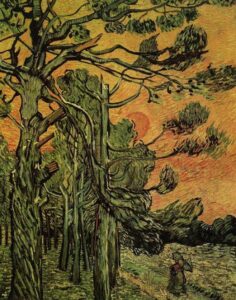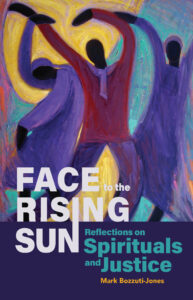
In the Everyday Spiritual Practices class that we launched this past Sunday, the Reverend Keith Anderson suggested a variety of spiritual exercises that we might employ during our busy days. Which practices we choose to use depends on which activities resonate with each of us at different times in our lives – even at different times of the day. Such practices can be any activities that call our attention to God or help us love and serve our neighbors.
I find that everyday activities, even odd ones, can become spiritually rewarding. For a while, I found spiritual value in the act of putting on my children’s shoes; the act resembled foot washing enough that it became holy to me. Then the days got busier, and now I am usually in a hurry when I put on my son’s shoes, so the act has lost its spiritual significance, but others have come to take its place.
Right now, one of my spiritually rewarding daily activities is the act of putting my older son to bed. He prefers to say his prayers silently. Next to him, in the quiet room, I naturally find myself praying silently alongside him, especially for him and his brother and my husband.
When the children were younger, a spiritual practice that came naturally was just walking to and from a pond near our house while holding them in slings or other baby-wearing devices. There was something about the beauty of the pond and the warm baby snuggled against me that naturally drew me toward mindfulness and gratitude. It can be easy to engage in spiritual activity if we just go with the acts that seem to draw us in that direction anyway.
Deliberately engaging formal, spiritual disciplines also helps many people. The Rev. Anderson suggested journaling and gratitude journals. My mother gets great spiritual satisfaction from religious journaling; she makes time each day to write in her journal and deals with life’s difficulties by asking God to be with her and then journaling her problems out with God.
Some people make time every day to sew or knit their prayers into quilts and blankets. We received a prayer blanket that someone had crocheted for my son when he was a baby that soothed me greatly during those first anxious, sleepless weeks with a newborn. Some people make time during the day to draw or paint the things and people they love in a spirit of mindfulness. I know a woman who swims laps mindfully each day; she finds spiritual benefit in the repetitive act of swimming and the relative peace of just moving back and forth across the pool.
What spiritual disciplines do you find help you in your daily lives? What daily activities have become imbued with spiritual meaning for you? Please comment! We would love to read about them!



 In the sacrament of Holy Eucharist as we share in the Body and Blood of Christ, we always say words akin to these: “do this in memory of me.” To sing Spirituals is to sing in memory of the Slaves and their faith, to recall these songs sung for centuries and handed down to us today as part of the legacy of the African American culture.
In the sacrament of Holy Eucharist as we share in the Body and Blood of Christ, we always say words akin to these: “do this in memory of me.” To sing Spirituals is to sing in memory of the Slaves and their faith, to recall these songs sung for centuries and handed down to us today as part of the legacy of the African American culture. We just launched
We just launched 

